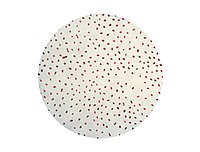
Photo from wikipedia
Introduction: Epididymo-orchitis (EO) is a common urological condition. In endemic areas, EO may be the presenting picture of brucellosis. Early suspicion and proper diagnosis is necessary for patient recovery. Objective:… Click to show full abstract
Introduction: Epididymo-orchitis (EO) is a common urological condition. In endemic areas, EO may be the presenting picture of brucellosis. Early suspicion and proper diagnosis is necessary for patient recovery. Objective: The aim of our study is to identify early predictors of Brucella EO. Patients and Methods: We retrospectively collected the data of all patients who were treated at the Urology Unit, Farwaniya Hospital, with acute EO above the age of 12 years between April 2017 and February 2019. Data from electronic and hardcopy files were gathered and analyzed. The diagnosis of acute EO was based on clinical, laboratory, and radiological findings. A total of 120 patients under the diagnosis of EO, epididymitis, and orchitis were reviewed. Thirty-one patients were tested for Brucella based on the history of animal contact, ingestion of unpasteurized dairy products, or persistent fever for more than 48 h. of those patients, 11 tested positive for Brucella orchitis. Results: A comparison between Brucella-positive and Brucella-negative patients regarding age, presence of fever, complete blood count (CBC) parameters, pyuria, and abscess formation was made. In the Brucella group, 72% of the patients had a history of animal contact compared to 33% in non-Brucella group (P = 0.006). When comparing CBC parameters in the two groups, Brucella group had statistically significant lower total leukocytic count and neutrophil count (mean ± standard deviation [SD]) 13.07 ± 4.22, 6.4 ± 9.98 versus Brucella negative group 17.35 ± 5.28, 7.8 ± 10.53, and P values were 0.037 and 0.004, respectively. Brucella group showed lymphocytosis (mean ± SD) 25.95 ± 9.78 versus non-Brucella group 13.22 ± 8.05 and P < 0.01. Conclusion: Brucella orchitis constituted 9% of the orchitis patients treated in our hospital. Patients with a history of animal contact, EO with lymphocytosis, and relative neutropenia should raise the suspicion for Brucella orchitis in endemic areas.
Journal Title: Urology Annals
Year Published: 2023
Link to full text (if available)
Share on Social Media: Sign Up to like & get
recommendations!